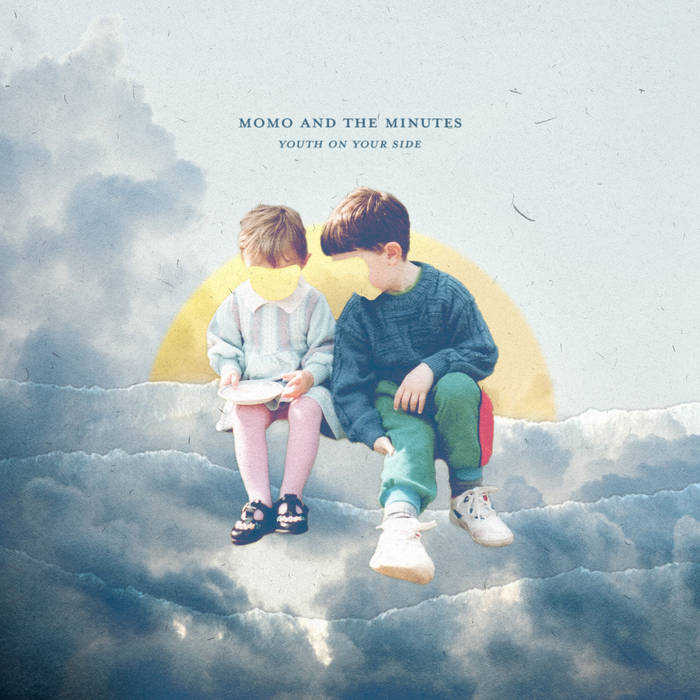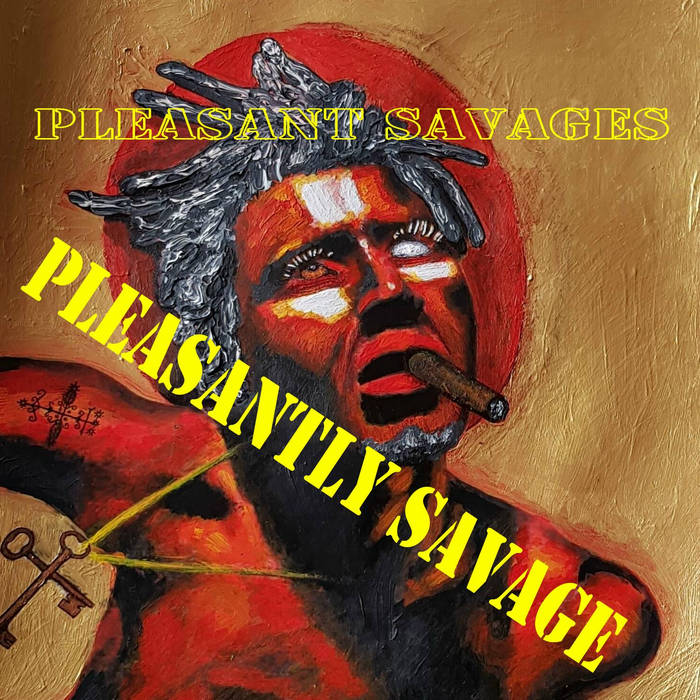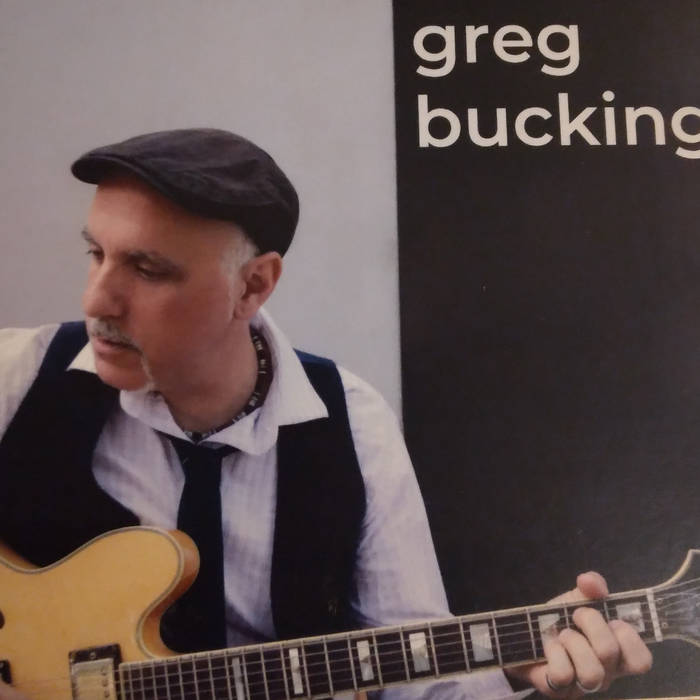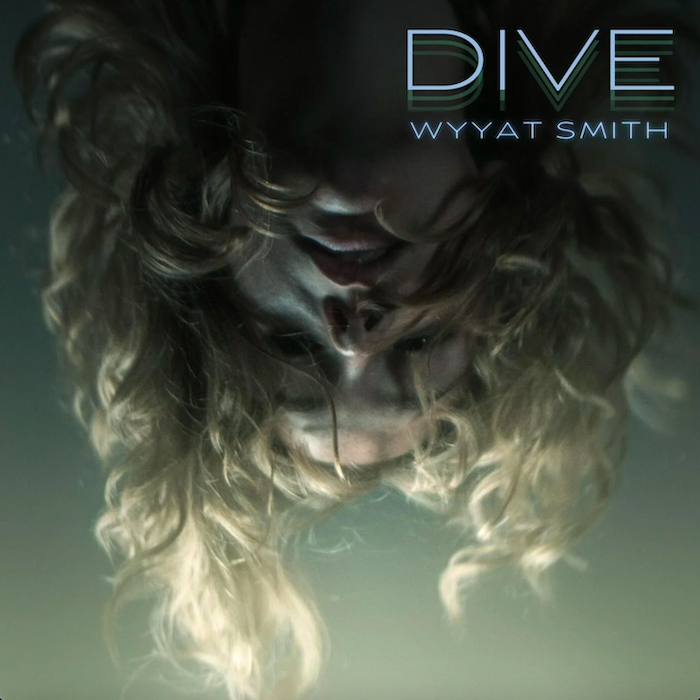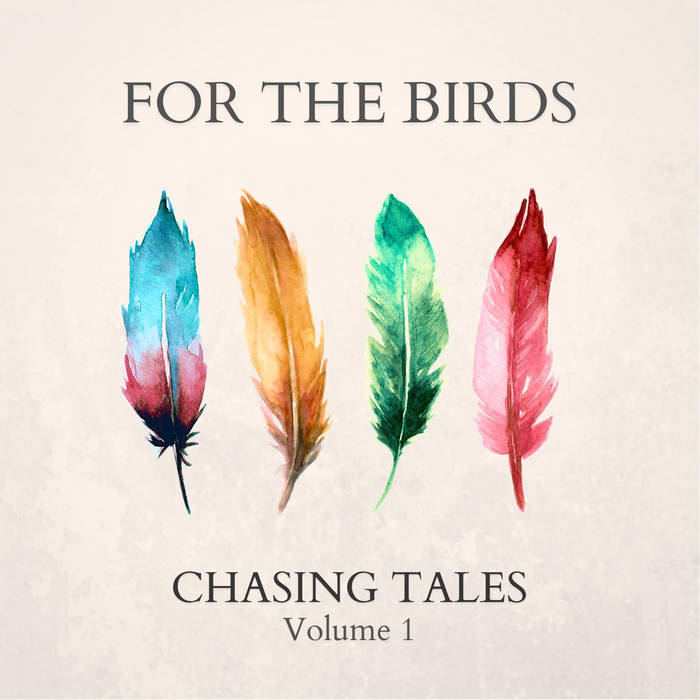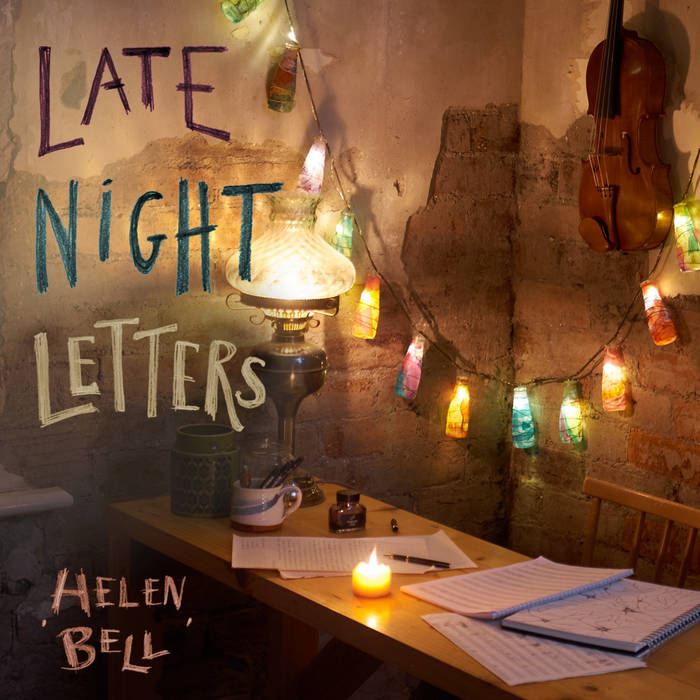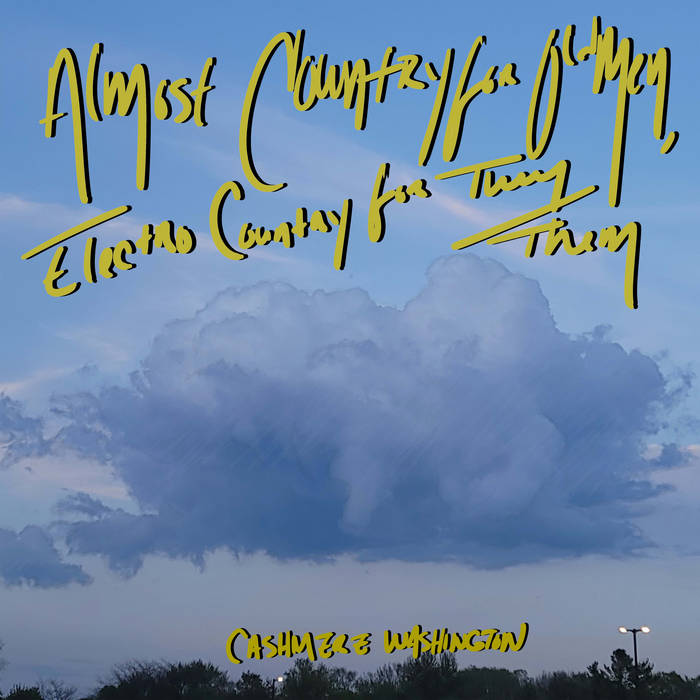|
Lavendula is a femme-led, harmony heavy, folk trio from the rolling mountains of Vermont, comprised of Johanna Rose (upright bass), Henri June (banjo) and Lilith (acoustic guitar). They were founded in 2021 and first started as a weekend busking band but have since branched out to share melodies and incantations beyond their Saturday ritual. The band recounts it was ridiculously fun playing together on the streets – they immediately had such great band chemistry. Before coming up with a name, the trio were offered several gigs just playing on the street. They took the gigs with an inkling that they might have something special beyond the street busking. On the way to their first gig, Henri June’s car burst into flames (which is the photo featured on the group’s EP cover). It was there, next to the burning car and exploding tires that they came up with the name Lavendula.
This first mini self-titled EP Lavendula, consisting of only three songs, pays homage to the band’s busking roots, covering some great traditional and popular folk tunes, with each song featuring a different member's voice. The songs were recorded and mixed by Johanna Rose, using Logic, one beat up condenser mic and a 57. They recorded it in Rose's treehouse that they live in, in the Northeast Kingdom of Vermont, as well as in Henri June's bedroom in Montpelier, Vermont. The songs were then mastered by Justin Perkins of Mystery Room Mastering in Milwaukee, Wisconsin. Although the group pays tribute to the busking tradition of playing the greats, like Joan Baez, their style also has a folk-punk edge, with heavenly to dystopian harmonies. Lavendula has been compared to Mountain Man, the Local Honeys and Days N' Daze. The first track “Dirty Old Town” was originally written by Ewan MacColl back in 1949 and was made popular by The Dubliners back in the late ‘60s. I first remember hearing this song on some old bootleg CD I got from a U2 concert back in the day. I think Larry Mullen sung it. I suggest to you, dear listener, that if you’re into folk music or protest songs, you research MacColl’s work. As an aside, it’s remarkable that this guy also wrote one of the most beautiful love songs ever recorded, in my opinion – “The First Time Ever I Saw Your Face” – which was memorably sung by Roberta Flack back in the early 1970s. I can’t get through that tune without my eyes getting wet. Anyway, Lavendula perform this first track beautifully, with soothing vocal harmonies and a gentle playing that’s hypnotic. It made me wonder what the Breeders might sound like, if they traded their electrics for traditional folk instruments. Next is an American folk ballad titled “Silver Dagger.” This one was popularized by Joan Baez during the folk music scene of the 1960s, and then later by country music icon, Dolly Parton, in 1999. The trio starts off with a short banjo intro and then the upright bass and guitar join in. The group’s three-part harmonies come through well on this tune. “My Cold, Cold Heart is Melted Now” rounds out the EP and has got all the charm and twang of the classic original. Written by Hank Williams and Johnny Masters, this tune was perhaps better known from Kitty Wells’ recording back in the early 1950s. This last number only features one singer (not sure which member it is, but her voice reminds me of a raspy Norah Jones) with an old sounding acoustic guitar – I want to say somewhat like a dobro would sound, but with a little more warmth to it. With that said, these three short tracks only had me pining for more. I have a soft spot for this type of music as I remember hearing one of these tracks as a boy from my father’s LP collection. When these kinds of songs are played well – like they are here, it’s as if I’m hearing them again for the first time. Here’s hoping Henri, Lilith and Johanna will be releasing a follow up real soon.
0 Comments
London-based Momo and the Minutes is Sam Dudley and he is taking the dream/alt pop genres to new levels with his debut EP Youth on Your Side. The artist originally wanted to write J-pop for other artists, but eventually the project grew into the group of songs that are present on his EP. Utilizing both digital and natural instrumentation and only four tracks on this album, Dudley right away immerses you in his pop rock sound.
Youth On Your Side opens with “Boy (Wouldn’t Be Here),” where some bass and drums dance into this track. Sounding very uplifting and melodic, once Dudley’s vocals come in, the sounds continue with a revved effect. It looks like pop music influences Dudley’s sound and he definitely wears his influences on his sleeve. On “Never Not Be Enough,” some acoustic guitar meets the start of this track. Next, some upbeat instrumentals strut in. Gradually, the vocals enter with a pop feel. There was a touch of melancholy to the vocals this time, but it still felt buoyant enough to get you on your feet and dancing. On “Matter Of When,” some synths light up the sounds on the start of this song. Next, the smooth instrumentals arrive for a soothing rock sound. This proved to be a slow burning number with a meandering feel from the instrumentals. A drumming beat and spiral guitars reel you in on the start of “In A Haze.” The music sounded very indie. This slow grooving song was filled with combined vocal harmonies that reminded me of The Beatles and other classic rock acts. Originally, Dudley set out to record J-pop tracks for other people and the J-pop inspirations could be seen in his sound. Dreamy and ambient, the music itself feels catchy enough to be on an anime show. Dudley’s vocals also clinch this. Other than the J-pop references, I was also reminded of Owl City here. While Adam Young mainly focuses on digital fare, I think Dudley goes one step further and beyond by including organic instrumentation on his record. Listeners can look forward to Dudley and the band performing these numbers live. This was a really good beginning for the artist and I look forward to seeing more music like this in the not-so-distant future.
Pleasant Savages is a collaboration between Oliver Hanney and Marty Drew that started in 2019. Hanney brings much of the lyrical self-reflection to their partnership; Drew brings a background in music theory and commercial songwriting. They found that their skills were quite complementary, and began to write and record together. Pleasantly Savage, a nine-song LP, is their second release.
They’ve written a fine bunch of songs here, with interesting, varied backing tracks, across different rock styles, centered around multiple guitar parts and tones. The first three tracks explore minor-key vibes, starting with “Trip,” which channels western and Spanish feels, like a Santana tune with added flamenco elements. “Riddles” switches easily through a few feels, including some punk sections. “Girl Phobia” offers a unique take; its sparse percussion is a nice touch, as the band allows the guitar strums to carry the rhythm. The next section of tunes explores bluesy feels. “Face Says It All,” a low-fi three-chord-type blues number, uses a Casiochord drum machine, nice layers of vocals, with effects and EQ to give it their own twist. The bluesy, reverbed, old-school guitar solo was a particular highlight. “Best At Being Me” is a slow blues shuffle, using a descending bass riff like the classic “Minnie the Moocher”. Again the band cuts cool bluesy solos, both from the guitars and a vocal-and-trumpet doubling. This arrangement could use a little paring, as the song’s two-bar pattern got a bit repetitive; the five-minute track could have run half that. “Not a Nostalgious,” a fine blues shuffle, tightens things back up with its start/stop sections and fun distorted vocals. “Soaked in Fairly Dry” is short and to the point, too, as the band brings in some jazz elements with the guitar solo. The mix here was particularly interesting, with that solo EQed away, then slotted low and behind the rhythm guitar. It worked very well. The last cut, “Chico”, takes a bit of an island/ska turn, rounding out the set with a bit of light-hearted fun. Lyrically, there’s a bit of humor incorporated, with some purposefully added drama and embellishment. The vocals are varied and fit each piece of music nicely. At times they’re mixed a bit low; I wish a lyric sheet was included, so I could fully understand and appreciate what was said. On the down side, some of the finishing touches on Pleasantly Savage didn’t quite land. The album starts off with crackles and pops, as if we were listening to a classic from the vinyl archive. That is all well and good, but the band has worked the crackles and pops throughout the album, which is overkill–the mood was clearly set at the beginning, so we don’t need it all the way through. Similarly, some of the mixing has some disorienting auto-pan and warble to it. They don’t need any of these gimmicks, as the tracks are strong enough on their own. But these are minor points. Pleasantly Savage is a pleasantly enjoyable spin. Let your ears enjoy!
Greg Bucking is an artist from New York who has decades of experience performing and songwriting. After decades of songwriting and performing, including the past ten years and four albums with the Americana trio The Vine Brothers, the drying up of live shows and touring during the pandemic gave Greg Bucking the time and space to finally get down to recording and producing his debut solo EP. The self-titled EP Greg Bucking contains six songs.
Bucking has a history of playing reggae and ska and I could hear that influence clearly on “No Justice.” This is a very laid back sounding song. I want to call it reggae infused folk. The song is also very organic sounding. I thought the recording quality was top notch. The hook is there and it was a nice introduction to his sound. The energy increases on “Roll in the Sunshine.” There’s a mix of styles somewhere between jamariaque and sublime. The groove is infectious and there’s also a super slick guitar solo. In terms of the vocal delivery it feels slick and smooth. It puts you in a good mood. “Atlantic Ocean” is very different. This is warm and inviting Americana that sounds equivalent to apple pie. It’s very comforting and some of what does this is the orchestral strings. Bucking sings this sound differently and it was my personal favorite vocal performance. A little bit of pain, suffering and nostalgia sounds good on him. “Tango in the Park” isn’t just a great name for a song but also sounds like the song. The beat, the guitar and overall structure. This is the first instrumental song in the batch. The Americana is revisited on “Oh Jesus” but this song had the attention of soul. The harmonica sounds great on this song. “Wayfaring Stranger” is a gorgeous song with exceptional vocal harmonies. This song is all about the vocals and I could hear faint female accompaniment on the chorus. The song is subdued and moves along with a warm southern gothic quality with gospel. The influence of different genres felt apparent to me. Some songs veered into distinct genres more than others. That’s not a bad thing but if you do too much it can make the signature sound of the artist. Bucking flirts with a lot of genres but he really nails what he attempts. Take a listen.
Melody Mcarthur is back with a new release entitled Kizmet. The artist has already made a name for herself with her previous releases two of which (Indigenuity and Rising Waters) were reviewed by Divide and Conquer.
Kizmet is arguably her best release yet. The seven songs come in around twenty-five minutes and go down very smoothly. Up first is “Unceded” and McArthur is in top notch form here. She dabbles with flow, classical singing and more. There are a lot of bases covered with the vocal approach alone. It’s a shimmering, upbeat song that does mention things like taking your own path, cancel culture and finding what you want. Up next is “Branded” which is a down tempo beat that is lush and warm. There’s some spoken words at first and a bit of an ’80s thing going on which I liked. The energy comes back in a soulful way with “Wildling (feat. Jahkota).” This song is an arguable highlight. I loved the beat but even better is the pairing of vocals. It’s a powerful combination of female voices with just enough funk and fun. There’s a straight up rap section which works well in the song. “Queen” has a different flavor. It’s thematic and grand sounding. I thought it worked really well in the movie. On top of that the song is catchy. McArthur belts it out again and also shows how much range she has. “Blood Memory (feat. Qo52)” has a slightly darker and haunting quality. There’s a mix of synths, inventive percussive aspects and atmospheric pads. The hook is there and McArthur nails this performance as well. “Matriarch” has some flow to it. There’s some slick rapping with a good amount of attitude. The groove is bright with a good amount of synths working together to make a hypnotic beat. I love a good rap with a memorable hook and that’s what you have here. The last track “Kizmet” is this haunting soundscape with spoken words for almost a minute. A beat infiltrates the mix with little warning and things begin to pop. It’s one of the more experimental songs and works as a closer. This album felt accessible and successfully combines aspects of hip-hop and pop. It was easy to enjoy from beginning to end, so hit play and let it ride.
Wyyat Smith or Nico Wyatt-Smith is an Australian singer, songwriter and producer. Smith explains “His music at its essence is self expression drawing from its spiritual roots in rock, house, R&B and electronic music. His track “Dive” was his first released song which was followed by “Bear the Storm” and he has a new release coming out on the 25th of this month.
The artist mentions “‘Dive’ is a narrative of a rapid and powerful attraction between two people while traveling that morphs into a tale of unrequited love. One has moved on, one is still hanging on trying to bring the other person back.” “Dive” starts with a bubbling synth that’s filtered. It doesn't take long for a hard hitting 4/4 beat to come into the mix. Soft pads reveal themselves along with vocals. The vibe is heavily inspired by new wave and electronic with an ’80s type of quality. I thought the melodies were catchy and the song at first feels very dance worthy. Around the two-minute mark the song takes a darker turn and sounded less airy and ’80s infused. This reminded me more of an artist like Burial. Long ominous sounding synths create this sort of immersion. Manipulated vocals at this point are sparse and serve as just another element. The third part of the song goes into a slow swell and breakdown. It’s lush and moves with waves surrounding you. Delicate piano creates an intensely intimate and beautiful breakdown. The music begins to rise and goes back into the more grinding and haunting section. A lone and distant kick drum keeps things rolling.The song continues and really sort of settles in the groove. I thought the structure of the song was interesting. The song has a number of distinct sections instead of a verse/chorus/verse type of approach. There’s no real hook but that is offset by the unique sound design and journey the song takes you on. Take a listen.
For The Birds is a supergroup collective out of Vancouver, British Columbia formed by musicians Ben Lubberts and Kyle Penny. They’ve just released an EP titled Chasing Tales Volume 1 which collects their first four independently produced tracks.
For The Birds hopes to create songs that “evoke a sense of grandness, wonder and excitement, painting a rich sonic landscape with a fresh perspective on modern production and songwriting.” Musically they’ve been compared to Elbow and Radiohead. Lyrically they pair “deconstructed religious insight and pensive musings” with a symphonic musical backdrop, with digital piano as the primary instrument. They’ve also created videos for each track on YouTube. After playing the EP on Bandcamp, I watched the individual song videos, so my review may be influenced by their visual presentation. All recording took place on GarageBand and the tracks were edited and mixed using Cubase and mastered using LANDR’s online services. “Heavenly Sigh” is the album’s debut single, and immediately establishes piano as the primary instrument. The vocals are somewhat in the style of Peter Gabriel, though not quite as idiosyncratic. The band states that this song “speaks of our frailty when the universe decides on alternate plans other than our own.” This is represented visually by drawings of a little girl losing her blanket to the wind, which is when the music swells into a dramatic arrangement with expansive keyboards, drums and a full vocal chorus. The overall sound is as good as any professional track, which means the boys made expert use of GarageBand and their online mastering tools. The video itself has a sweet, surprise ending that I won’t give away. The next track “Quiet Dancers” again starts predominantly with piano and vocals, but the lead vocals are more melodic and interact effortlessly with the background singers. The music is here is a more sophisticated, smooth-jazz version of their first track, and the lyrics have to do with breaking out of one’s shell and dancing without fear or shame, in whatever form that takes. “I know I’m not on Broadway, but man I got that feeling / That I’m a verse away from breaking out / Breaking out among the restless crowd.” The video features a wild, nonstop interpretive dance by the lovely Michelle Mitschrich. “In Good Hands” is introduced as “a tribute to a fallen brother and the security and timelessness of brotherhood.” Here again the vocals and even the arrangement strongly channel Peter Gabriel. The video, shot on location on a train trestle, benefits from overhead drone footage and builds tension as two brothers - and then one - freely climb and walk over them. Though I don’t know the back story, it’s clear that this song comes from real loss and is a powerful and sadly beautiful callout to kindred souls. If you don’t cry at the end, you are a monster. “Blessed Day In January” is termed “a jazzy daydream during the coldest month.” This final track is again packed with lead and background vocals and wall-of-sound keyboards, a bit like the Fleet Foxes but even more expansive and “church like.” The video also brings us full circle, with the little girl and her blanket, the dancer and the striking English locations (now covered in snow) all making a final return. Overall I was quite amazed at the sound quality the boys achieved with such basic tools, and the music was never less than beautiful. A great start to what promises to be a terrific ongoing series.
Classically trained violist Helen Bell is based in north-east England and has just released her new EP Late Night Letters, which is made up of four songs from her upcoming album. She explains: “This one is mostly about personal relationships; the next two will focus on our relationships with the physical world and the digital world.” She also found that finishing a full album at one time was a daunting task, and breaking the songs down into three EP’s made the process a little easier.
Bell has studied music at the university level but has been writing songs as long as she can remember. Her music has been classified as alt fold, psych folk and indie folk, and her sound has been described as “The Incredible String Band, The Books, The Full English, Eels, Donnacha Dennehy and White-Album-era Paul McCartney went for a picnic at a seaside fairground.” Other influences include The Decemberists and Joanna Newsom. Except for bass and drums, Bell performs all her own instruments which include piano, viola, violin, electric violin, recorders and keyboards. Recording took place in Bell’s home studio using Reaper and Fireface 400, with mixing and mastering by Bell and her partner Tom Drinkwater. Within the first few notes of “Easier to Write” it’s clear we’re in the hands of a skilled composer and musician. Bell calls this song “fairly standard piano-based singer/songwriter fare, although with the slightly less standard addition of an EWI (electronic wind instrument).” However, there’s nothing standard about this music, as Bell seems to create a virtual symphony using just her voice, an acoustic piano and the electronic flute. I hate to use a pop culture reference here, but the EWI flute sound has the same eerie tonality as the subliminal music that plays in the darkness of the Disneyland “Pirates” ride. Her melodies are dark and intricate, yet also quite lovely, and her vocals play against the chords in constantly surprising fashion. Lyrically, Bell says that she often starts with her words first, and tends to write a lot of them. In that way, her lyrics read as fine poetry on the page, always with an internal rhythm that lends itself to music. Here’s just a sample: “Strange how the blackbirds always seem so alarmed by the arrival of dusk… I don’t know why, but it kind of reminds me of the way / Some things are easier to write than they ever could be to say.” “Molecule” Immediately adds most of Bell’s other instruments (mostly stings and winds) along with Tom Drinkwater’s bass and drums, making it sound like a small jazz combo. Bell speaks in her notes of being highly influenced by gamelan (or Indonesian) music, and has used some of those melodies here. This is a more upbeat song while still featuring Bell’s compositional bravado. She’s almost like a jazz-classical version of Kate Bush. In the middle section there’s a thrilling moment when the violins are routed through a wah wah pedal. A highly enjoyable track that makes you smile even with all its melodic complexity. “Constellation” goes much deeper into Bell’s fascination with gamelan music, using “actual gamelan samples amongst piano and strings, and a few structural elements adapted from gamelan forms within its composition.” As a result this is a much more exotic track, effortlessly straddling at least two different cultures. The basic song form is another lovely Bell construction with the gamelan touches working as grace notes and set dressing. The final track “Hymn of the Orbital” is modeled on folk hymns, and is the only track with Bell extensively overdubbing her voice against a Hammond organ patch. The lyrics seem to grapple with an unresolved love: “And I still miss the way we were so hungry / and I will grieve for the versions of us who had to die…. but now I know we circle different suns.” I can say unreservedly that I’ve never heard music arranged and performed in quite this way before, and Bell’s facility with her instruments and her innate confidence in her material is a wonderful thing to witness. Recommended!
ashmere Washington is a multi-media project based in both Midland and Ypsilanti, Michigan and has served as the main creative outlet for artist, multi-instrumentalist and beatmaker Thomas Dunn since 2021. So far, this artist has put out one EP in a three-part series. The first one The Shape of Things to Come, came out last year, and landed on A2Pulp's list of their end of year-round-up and Rosy Overdrive's Top 25 EPs of 2021. Dunn just released the second EP Almost Country for Old Men, Electro Country for They/Them, was recorded at home and tracked using a combination of Ableton and a Tascam DP-008. All songs were written, arranged, performed and recorded by Dunn. The songs were mixed and mastered by Dave Roof at Rooftop Recordings, using mostly a combination of rack mixers and a tape dubbing unit from the ‘80s. The EP was made because Dunn wanted to make an indie rock with dilla drums and hip-hop production. Although his songwriting style borrows a lot from Kacey Musgraves' album Golden Hour, the EP includes grinding guitars that are akin to Dinosaur Jr and Smashing Pumpkins. The singer’s gritty vocals are often balanced by delicate piano and string arrangements, too. Dunn explains the songs were born out of a rear-end car accident by a tow-truck in Ann Arbor, during his final semester of college. Many of them were written from “really getting Romantic Comedies during the recovery process.” The sentimentality comes from his deep-seated admiration and gripes about the film genre itself. Songs on "Almost Country…" are about moments in the songwriter’s life, which involve certain people and situations that prompt the question – "how did we get here?"
The beginning chemistry between the fuzzy guitar, piano and hip-hop beats is certainly a unique arrangement on “Life Is.” The piano melody on this opener really tugs at the heart strings when you read the ending lyrics – “maybe I’m not scared to die / I know that I’m petrified / to try and fail.” And earlier, a snapshot at life – “Cuz this is what life is / it’s stuck on the front porch / watching somebody chain smoke cigarettes.” Washington’s words offer a glimpse into that time in a young person’s life, where they ask – “Is this all life is?” I liked his first line that pays homage to beat poet Allen Ginsberg’s 1956 poem “Howl” (“Saw the best minds of my generation.) The next track “I Want You” has got a mid ‘90s sound and style, and kind of reminded me of the band Live or Dinosaur Jr. There are some very interesting guitar layers here, too. Next up is “Charlie Brown” which features more fuzz guitar and deeper, rocking groove. I liked the bass melody on this tune. I’m guessing the reason for the song’s title, plays into the seemingly, always depressive state of the famed Peanuts comic character, Charlie Brown (“I’m feeling down again”). Although here, Charlie is referred to as ‘she.’ “Saint Thomas” features references to “snorting up Vikes” “hitting the bottle” but not yet “hitting bottom” and a Remington that Daisy stashed away someplace that she bought with her “Christmas cash.” Instrument wise, there are some faint strings playing in the background, and an accompanied keyboard melody, though the fuzz guitars and drums overpower these other instruments by far. “Anywhere” begins with a slow beat, and some keyboard/string action that have a sentimental feel to them. There’s some beautiful songwriting in this tune – “I’ll take you anywhere that make you wanna glow” – mirrored with bad vices further in – “cheap booze and cigarettes.” The last track “Rosy” is one of the more rocking tunes on the EP, as well as the artist’s shortest, and leaves the listener with an indie rock earworm. “Put those rings around Rosy” is a nod to the grade school song “Ring around the Rosy, a pocketful of Posies” that we all remember – at least I think most of us do. “Almost County…” is second in a series of EPs and picks up where the last EP left off and veers off into a new direction sonically. Overall, Cashmere Washington’s songwriting captures a memorable time and place in the young artist’s life.
Solitude for the Masses is the fourth release from Western Bloc aka Barry James McCarthy. I’m familiar with his body of work and reviewed a number of his previous releases on Divide and Conquer. The artist explains he digs into more pop/soul/post-punk roots. I would say I would have picked up on that even without being told.
The album opens with “The Ultrasonic” and this song in particular had strong post-punk vibes. It reminded me of Joy Division in a number of ways including the aesthetics. There's a number of great things on this song including the vocals and a very interesting use of synth on this chorus. This song was a strong start. “The Heaviest Weight Is Love” which starts with what sounds like an 808 kit and lush guitar with electric piano. The vocals were great on this song and this song had the soul thing going on. It’s very ’70s based. “Falling” is next and starts with a bang. The song rips. I love the lead guitar fills on this song and the hook is memorable when he sings “When I’m falling.” The digital sounding horns work for the song.“The Grim Gram” was very cool. The song moves with a kinetic energy. I was picking on Brian Eno, David Bowie and Roxy music flavor. This song has a glam rock-like feeling I don’t hear too often. I loved it. “Peace Pigs” has this low key funk to it. There are wah guitars that combine with what sounds like a synth bass as well the 808 kits. The chorus comes suddenly and pops when it does. “Solar Flare” sounds similar to the name. The synths are bright and the chorus shines with a positive and joyful sort of feeling. I love a good ballad and “Always on the Outside” is exceptional. His vocal style thrives here and I feel a lot of emotion coming from his delivery. Again very David Bowie with a side of Brian Ferry. An airy arpeggiated synth leads the way on “A Leaf on a Tree” while “Slave to the Algorithm” contains cascading melodies from the guitar and piano with a string chorus. He closes strong with “You Fade” which is a soaring ballad about oblivion. Solitude for the Masses is arguably the best Western Bloc release. The songs are well written and I think the fact they he dug deep into his roots paid off. |
Critique/insightWe are dedicated to informing the public about the different types of independent music that is available for your listening pleasure as well as giving the artist a professional critique from a seasoned music geek. We critique a wide variety of niche genres like experimental, IDM, electronic, ambient, shoegaze and much more.
Are you one of our faithful visitors who enjoys our website? Like us on Facebook
Archives
July 2024
|


